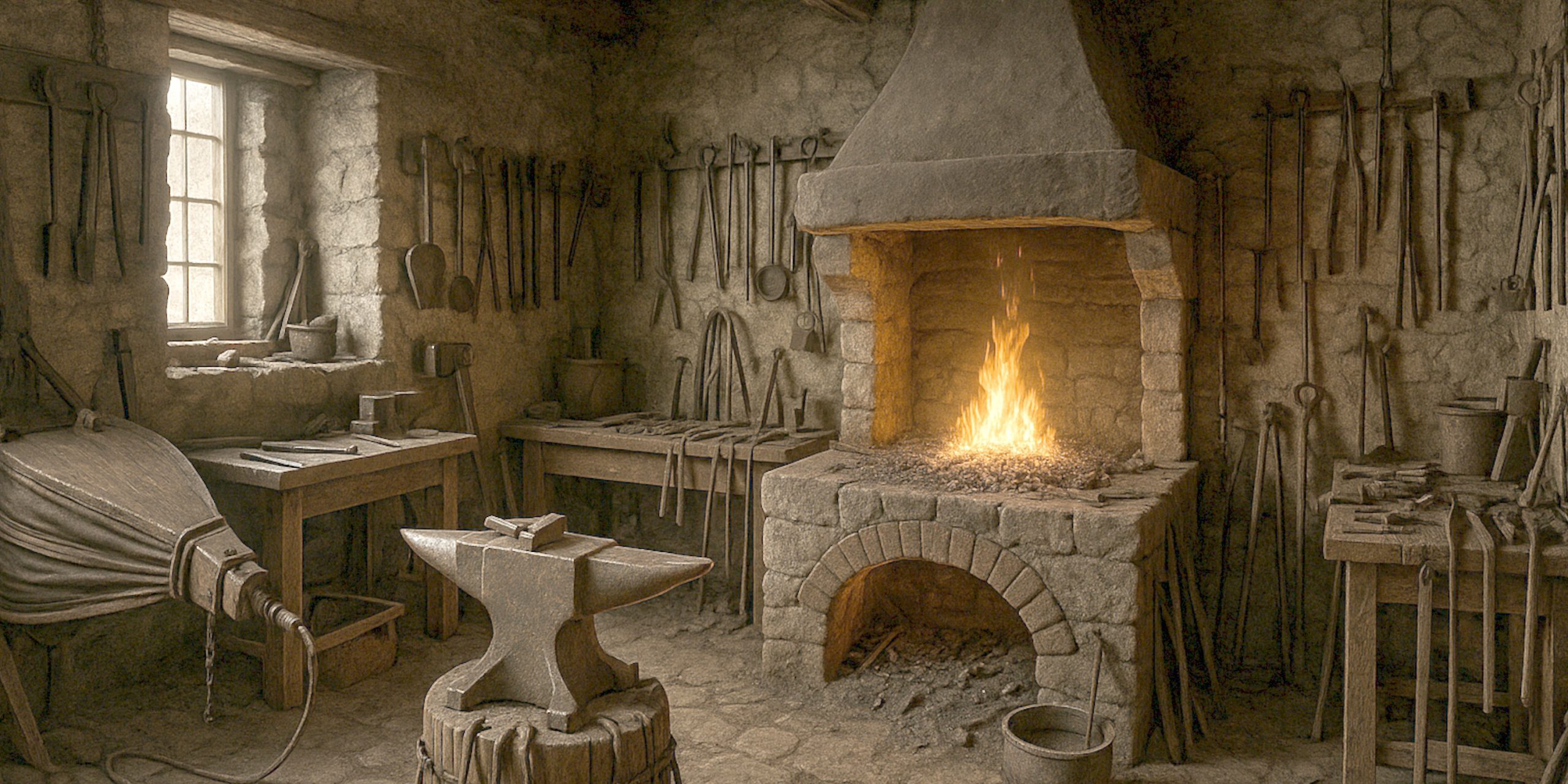
Swordsmithing is an intricate craft that blends fire, steel, and human resolve. Though methods have evolved, the fundamental tools remain rooted in tradition. A well-equipped forge is not just a workspace—it is an extension of the smith’s skill and intention. Below is a detailed breakdown of the core equipment every swordsmith needs, structured around the stages of the forging process.
1. Heat Source and Temperature Control
Forge
The forge is where all shaping begins. It must reach temperatures upwards of 1,200°C to make high-carbon steel malleable. There are several types:
- Coal or Coke Forges: Preferred by traditionalists for their control over heat zones. Requires skill in managing airflow and fuel bed.
- Charcoal Forges: Historically accurate for many regions, burning cleaner than coal but at a higher fuel cost.
- Gas Forges: Often propane-based, these offer ease of use and consistent heat. Ideal for repeatable work but less versatile for advanced techniques like differential hardening.
Thermocouples or Pyrometers
Precise temperature monitoring is critical during heat treatment. Infrared thermometers or embedded thermocouples help track forging and critical transformation temperatures.
2. Shaping and Forming Equipment
Anvil
The cornerstone of the smithy. Most anvils used for bladesmithing weigh between 100 and 200 kg and are made of hardened tool steel. Key features include:
- Face: The main flat surface for forging.
- Horn: Used for drawing and curving metal.
- Hardy Hole: Square hole for inserting shaping tools like bending forks or hot cutters.
- Pritchel Hole: Round hole for punching or drifting.
Hammers
Each hammer serves a unique purpose. A skilled smith will often switch between:
- Cross Peen Hammer: For drawing out steel lengthwise.
- Straight Peen Hammer: For more directional control.
- Rounding Hammer: For aggressive shaping with less surface marking.
- Finishing Hammer: Lighter weight, used for refining the surface and detail work.
Tongs and Clamps
Tongs are essential for gripping hot steel. A comprehensive tong rack includes:
- Flat Jaw Tongs: For flat bar stock.
- V-bit or Wolf Jaw Tongs: Versatile for odd shapes.
- Box Jaw Tongs: Secure grip on long blade sections.
3. Grinding, Filing, and Edge Formation
Belt Grinders
The modern replacement for labour-intensive draw-filing, a belt grinder allows precision control over bevel angles and edge geometry. Commonly used belts include:
- 36–60 grit: For rough shaping.
- 80–120 grit: For refining bevels.
- 400 grit and above: For polishing and finishing.
Files
Despite the rise of grinders, files remain vital for tight corners, transitions, and corrections. A complete set includes:
- Mill Files: For general shaping.
- Half-round and Round Files: For fuller grooves and finger guards.
- Needle Files: For fine detail on fittings and inlays.
4. Heat Treatment Gear
Quench Tank
A hardened blade requires controlled quenching. The tank must be deep enough to submerge the full blade, typically filled with:
- Oil: Slower and less violent than water, reducing the chance of warping.
- Water or Brine: Historically common, but aggressive and better suited to certain steels.
Temper Oven
After hardening, the blade must be tempered to reduce brittleness. A digitally controlled kitchen or heat-treating oven allows accurate holding at specific temperatures for hours, commonly between 180–250°C depending on steel type.
5. Measuring, Layout, and Marking Tools
Accuracy defines a good sword. To ensure symmetry, alignment, and proportionality:
- Calipers: For measuring blade thickness and tang depth.
- Rulers and Steel Scales: For checking length and straightness.
- Centre Punches and Scribes: For layout lines on steel.
- Squares and Protractors: To check angles, especially at guard junctions.
Many smiths also use jigs or templates to speed up layout for repeatable designs.
6. Safety and Workshop Maintenance
Protective Equipment
- Leather Apron and Gauntlets: Protect from sparks and sharp edges.
- Face Shield or Safety Glasses: Essential during grinding and forging.
- Respirator: Necessary for grinding and working with modern materials or synthetic belts.
- Hearing Protection: Grinders and hammers produce dangerous levels of noise over time.
Workbench and Vice
A post vice, also called a blacksmith’s leg vice, is mounted securely to a solid bench. Its design allows it to absorb shocks from filing and hammering without shifting. Used for fittings, pommel adjustment, and finer shaping tasks.



